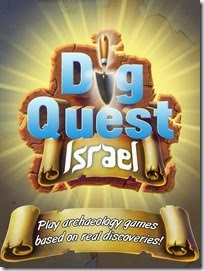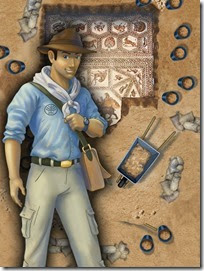Barrington Atlas of the Greek and Roman World (edited by Richard J. Talbert) is not a new publication—in fact, it has been in print for fifteen years. The print version has been heralded as one of the best and most exhaustive atlases of the Greek and Roman World. Here are a couple summary reviews of the print version.
“This atlas is an indispensable tool for historians concerned with ancient times. But it is also a source of great pleasure for the amateur, the lover of literature.”—Bernard Knox, Los Angeles Times Book Review
“Beautifully produced with an exquisite combination of scholarly precision and the highest level of cartographic art, this atlas is one of the greatest achievements in 20th-century Greek and Roman scholarship—and it probably will never be superseded.”—Publishers Weekly
It took twelve years and dozens of contributors to complete its 102 maps. In terms of historical periods, the atlas covers from c. 1000 BCE–640 CE (Archaic-Late Antique/in the Levant Iron Age II–Byzantine Period)—these periods are marked on the various maps with color-coded highlighting beneath the ancient sites. The maps only include ancient site names and regions, but do not include markings for historical events. This is both an advantage and limitation of the atlas, as is noted in the introduction by the editor. The advantage is that a scholar may supply their own markings for historical reconstruction—the limitation is that the lay person, in most cases, is not familiar with the historical events.
The print version of the Barrington Atlas is clearly a valuable reference work, as has been recognized for the last fifteen years. However, it is hampered by its price ($425 for the atlas only!) and its cumbersome size. On these two points the iPad version takes a great leap forward in improving the Barrington Atlas.
Details for Digital Version:
Platform: iPad app (not in iBook library)
Cost: $19.99
Size: 411 MB
I observed three main advantages of the iPad app over the print version:
- Versatility. A reference tool’s usefulness is often heightened by digital access, as it enables a user to carry many large-sized works within a computer, tablet or smartphone. This advantage is particularly pronounced with regards to the Barrington Atlas due to the sheer physical size of the printed version.
- Navigation. The iPad version functions very similar to an image database in that the maps may be accessed from a host of different locations in the app including a simple search in the “locator” tab or the hyper-linked gazetteer. The drop-down key menu is a very nice feature that reduces clutter on the maps.
- Price. $19.99 on iPad versus $425 for printed atlas and $285 for printed map-by-map directory. That is $670 for a non-interactive three-volume work that takes up real estate in your library or $20 for the same data with intuitive interactive navigation tools and search functions. Need I say more.
Limitations:
- In some cases another level of resolution on the maps (for zooming) would be helpful, however, this would also increase the file size, which is already at 411 MB (a substantial amount for a 16GB baseline iPad).
- It would be helpful if the atlas was available for use on a desktop or laptop as well as iPad. The iBooks store used to be only available to iPad users, but is now a multi-platform offering for iPhone, iPad, MacBooks and iMacs. This would enable users to have access to the Barrington Atlas alongside a word processor and/or other reference works (e.g. Logos, Accordance, etc.) Users would be more likely to download large files on laptops and/or desktop computers and they would also have better access to the maps for use in presentations.
Comparison to Other Atlases:
Readers of this blog will probably be acquainted with several different atlases of the biblical world, such as the ESV, Zondervan, Moody, Carta, and Sacred Bridge Bible atlases. It should be understood that the Barrington Atlas of the Greek and Roman World is directed at a much broader area and subject material than these atlases. For the price, functionality, and large quantity of maps it is hard to beat the Barrington Atlas of the Greek and Roman World. Still, potential users of this atlas may also be interested in the following works:
- Michael Avi-Yonah – Gazetteer of Roman Palestine (1976)
- Carta’s Translation of Eusebius’ Onomasticon (with site index) (2003), also available on Accordance which I would highly recommend over the print version due to its search capabilities.
- Yoram Tsafrir, Leah de Segni, Judith Green – Tabula Imperii Romani Iudaea Palaestina (1994)
These works deal with the same periods (Hellenistic-Byzantine), but they provide much more detailed discussions and maps related to the historical geography of Greco-Roman Judea, Samaria, Galilee (i.e., Palestine). These regions are covered in part 5 of the Barrington Atlas “Syria-Meroe” — specific maps 68–71. These maps are well designed and accurate, but limited in the amount of place names that they display.
In sum, while noting the limitations that I discuss above, I would definitely recommend this atlas for anyone interested in the Greco-Roman world… assuming that you own an iPad.


